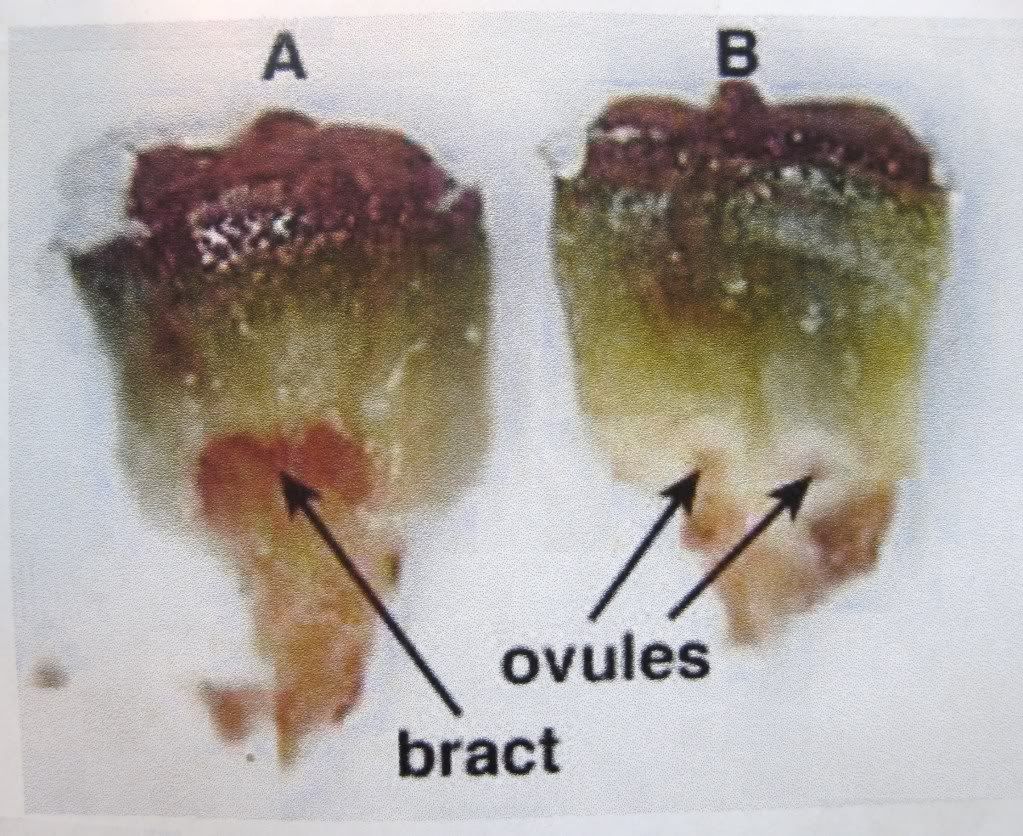Conifers are usually monoecious (bisexual).
Mature seed cone are larger than pollen cones.
- Pollen cone of Pinus (Pine)
The microsporangia is on the abaxial (lower) surface of the microsporophylls.
The pollen grain of pine has air bladders.
- Pollen cone of other conifer species
Many other conifer species actually do not have air bladders, such as the giant sequoia.
Pollen cone of Giant sequoia (Sequoiadendron giganteum).
The pollen cone of the giant sequoia does not have air bladders.
- Prepared slide of Pinus pollen cone longitudinal section
Longitudinal section of the pollen cone.
cross section and longitudinal section of the pollen cone.
- Seed cones of Pinus
The cones are red when it is pollinated.
This green/brown cone is about one year after pollination occurs.
Fertilization will soon occur as the megagametophyte has completed development.
Two years after pollination.
The seeds are mature.
The ovuliferous scales:
The demo.
The ovules are on the adaxial side of the ovuliferous scale.
There are two ovules on each scale.
- Prepared slice of Pinus seed cone longitudinal and cross-section
An overview of the seed cone.
A closer look at the longitudinal section of the seed cone. (Picture by Midy)
- Prepared slides of Pinus embryo
Nucellus is hapliod.
- Germinating Pinus seed
Different stages of germinating Pinus.
The cotyledons and the young needles are borne singly (spirally arranged), not in fascicles (short shoots) as on mature plant.
Mature Pinus has leaves borne in fascicles.
- Yee Sing





















Hi guys, very nice slides. The nucellus is diploid though.
ReplyDelete